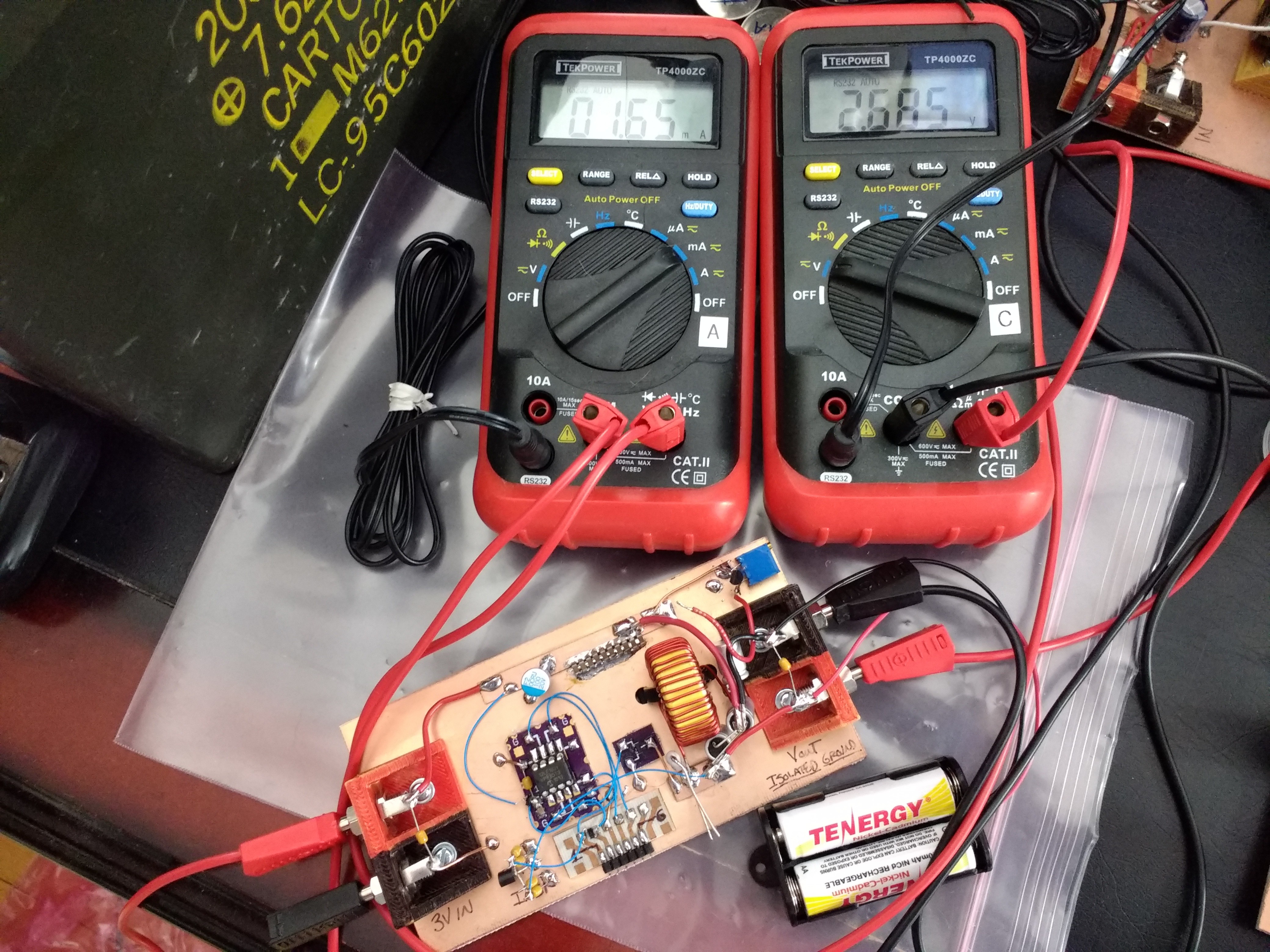So, my first experiment with charging NiCd cells is almost done. They have been charging from a CR2477 through the converter for more than a week now. The initial cell current of 2.5 mA has now dropped to 1.65, while the voltage is at 2.0, which would typically be considered dead.

The NiCd battery voltage is 2.685V at this point. This doesn't mean all that much, since you can't accurately infer the state-of-charge of the NiCd's from their voltage. I roughly guess that I was able to extract 70% of the energy from the coin cell (earlier modeling predicts 83%). Assuming a 60% converter efficiency (testing showed 65%), and 100% NiCd charging efficiency, I might have dropped 4000J into the NiCd's. It's taken a week to charge, so self-discharge has taken a toll, and maybe I managed to cram 3800J in there.
If I go with my top-off-the-capacitor plan, I'll need to transfer 1742 J to the capacitor to bring it from 12 to 14V. This allows me an efficiency of 45% for the second converter. It seems like it might be possible.
So, today, I have to finish building my capacitor bank and figure out some kind of boost converter to top off the capacitor with the NiCds. I have to hurry a little because I'm going to start losing energy to self-discharge in the NiCd's. For the moment, I suspect even the feeble current from the not-quite-dead-yet CR2477 is holding self-discharge at bay, but that won't last long.
Besides this one shot, I still have a week to try charging other NiCd's, so I have to get them going today, too.
 Ted Yapo
Ted Yapo
Discussions
Become a Hackaday.io Member
Create an account to leave a comment. Already have an account? Log In.